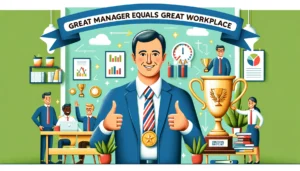We still measure employee performance like it’s the 1930s. Here’s how to change.
- 3 Min Read
The 40-hour work week might have been great when it debuted in the 1930s. But it’s not so relevant now Last week, Kerri Hollis , Modern Communications Product Manager, Microsoft, spoke to Helen Tupper about employee engagement. This week, Kerri revisits her interview with Helen Tupper to find out why we take such an outdated […]
- Author: Kerri Hollis
- Date published: Mar 18, 2019
- Categories

The 40-hour work week might have been great when it debuted in the 1930s. But it’s not so relevant now
Last week, Kerri Hollis , Modern Communications Product Manager, Microsoft, spoke to Helen Tupper about employee engagement. This week, Kerri revisits her interview with Helen Tupper to find out why we take such an outdated approach to measuring employee performance. Together, they look for a better way.
As of the 1300s, MPs aren’t allowed to wear armour in the Houses of Parliament. Edward III passed this law to keep the peace in the House of Lords and House of Commons.
As of the 1870s, it’s illegal to herd cattle while drunk. Intoxicated wranglers could be fined as much as 40 shillings. The law also applies to operating steam engines.
As of the 1930s, a full time job is 40 hours a week. During the second industrial revolution, this was found to be the optimum period of time for employee performance.
Sometimes, the old ways of doing things just aren’t relevant any more.
As people and lifestyles develop, it’s important the rules we live by keep up. And fortunately, the UK Law Commission has a team to take care of outdated laws.
But changing the way we measure employee performance, well, that’s up to individual businesses like yours.
The new good
We used to measure an employees’ performance by the hours they worked.
By how quickly they progressed through a linear career.
By the number of roles they had on their CV.
But things have changed. Our lifestyles demand flexibility. Not everybody wants to be a manager. And today’s children will have up to 40 roles throughout their careers . Helen Tupper, co-founder of career development company Amazing If, explains why.
“There’s lots more change, both in your company and outside your company,” she explains. “There’s also lots more freedom to develop in your career.” Many of us now have what Helen calls a squiggly career.
In a squiggly career, everyone is moving in their own direction, at their own pace, toward their own goal. Your employees have more options for how and where they work. Instead of moving up a corporate ladder, they’re more interested in developing their unique skills, to add value to the business in their unique way.
And when everyone’s adding value in a unique way, you have to measure employee performance in a unique way, too.
Not by the hours they work.
But by the value they add.
Employee performance for business performance
Employees have their ambition. The business has its vision. Employee performance is how well the two work together.
To find out, it starts with a conversation.
Where is the company going and how can the employee help it get there?
How will the success of the business help the employee achieve their own ambitions?
What can you do to develop employees into their best selves – at work and in life?
When you can answer these questions, you’ve got a measurement for employee performance that isn’t just how many hours they spend at work. When your employees know how they add value to your business and what’s in it for them, they’ve got a good reason to be engaged.
That is, after all, Helen’s definition of employee engagement. “It’s empowering people to bring their best selves to work and do their best work at work.”









